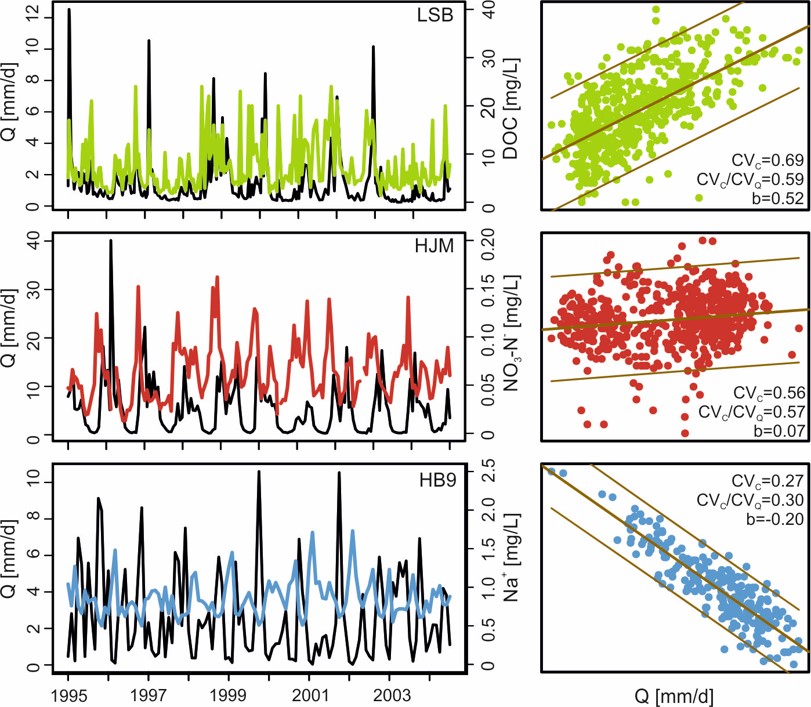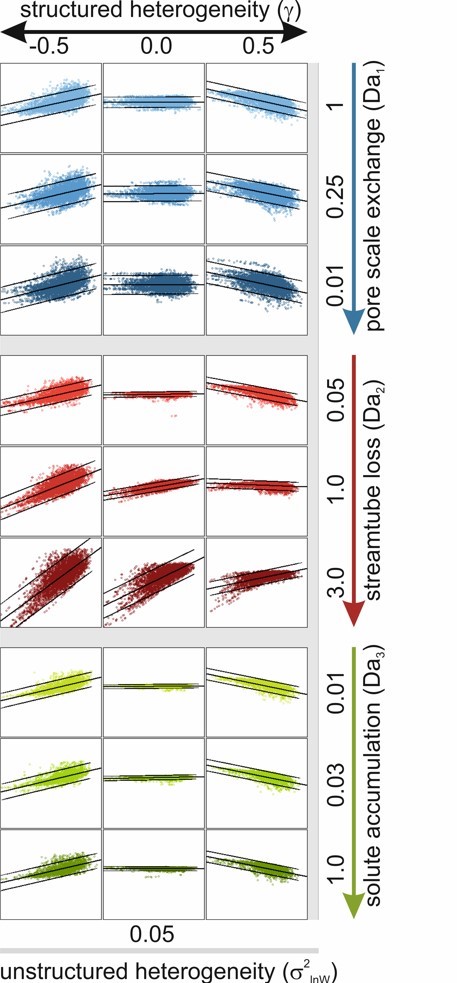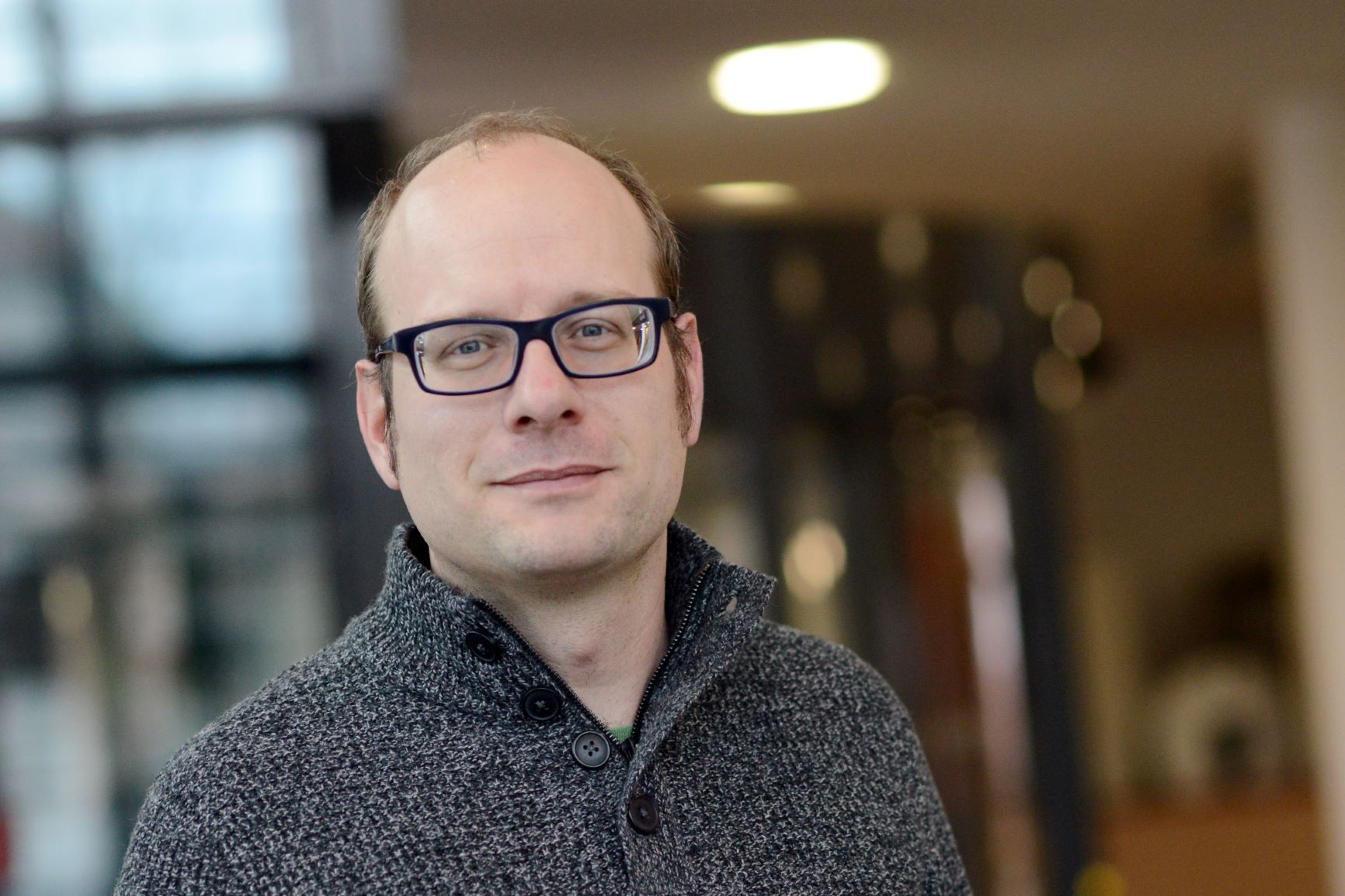Export Regimes in Catchments
Project within IP Catchment Dynamics
Scope and Mission
 The concentration (C) variability in concert with discharge (Q) variability and the resulting load (M) variability can be subsumed as export regime. Export regimes represent the integral response of upstream, often smaller scale mobilization and reactive transport processes within the catchment and can be characterized by metrics such as the slope in the logC-logQ regression. The export regime of solutes and particulates affects the health and functioning of aquatic ecosystems and is linked to water security. To effectively manage water quality at the scale of catchments we need to understand the hierarchy of the processes shaping export regimes.
The concentration (C) variability in concert with discharge (Q) variability and the resulting load (M) variability can be subsumed as export regime. Export regimes represent the integral response of upstream, often smaller scale mobilization and reactive transport processes within the catchment and can be characterized by metrics such as the slope in the logC-logQ regression. The export regime of solutes and particulates affects the health and functioning of aquatic ecosystems and is linked to water security. To effectively manage water quality at the scale of catchments we need to understand the hierarchy of the processes shaping export regimes.
Methods
 We believe that the complex interactions shaping the export regime at catchment scale can be disentangled by a combination of data-driven top-down approaches on the one hand in concert with explorative modelling approaches on the other hand.
We believe that the complex interactions shaping the export regime at catchment scale can be disentangled by a combination of data-driven top-down approaches on the one hand in concert with explorative modelling approaches on the other hand.
Outcomes and Outreach
The synthesis of both approaches will provide knowledge on the spatial and temporal variability of dominant controls of export regimes and by that provide a foundation for predictive modelling approaches of solute transport and ecosystem health at catchment scale.
The work in this IP project is facilitated by household- and third-party funded PhD projects:
Sophie Ehrhardt- in the household funded PhD project “Nitrogen travel times and legacies” (HDG, since 08/2017): Sophie combines long-term data of fertilizer use and atmospheric deposition with observed concentration and discharge data to assess the build-up of nitrogen legacies in German and French catchments and the temporal offset between input and riverine exports.
Pia Ebeling- DFG-funded PhD project (grant number 392886738) “Dominant controls on catchment water quality dynamics – a Germany-wide analysis using data-driven models“ (HDG, since 07/2018): Pia utilizes a German-wide database of surface water quality and quantity to learn about the controls of average nutrient concentration and export regimes. In addition she will explore long-term behavior of export regimes and quantify shifts in nutrient stoichiometry in German and French catchments.
Joni Dehaspe- household funded PhD project (PhD cohort InStream ) “In-stream nutrient processing and export regimes at network scale” (HDG, since 10/2018): Joni uses a spatially explicit model of reactive transport in stream networks to explore the effect of in-stream nutrient uptake on C-Q relationships. She transfers this knowledge to observed low-frequency water quality data from catchments all over Germany to assess stream ecosystem functioning.
Maria Determann- household funded PhD project (PhD cohort DYNAMO ) “Coupled effects of catchment export regimes and nutrient processing in lakes” (SEEFO, since 04/2020): Maria couples a catchment model of water quality dynamics with a lake model to explore how lakes and reservoirs modify the nutrient export regimes dictated by the catchment. She transfers this knowledge to observations from catchments with lakes all over Germany, and assesses the effects of extreme climatic events on the nutrient retention capacity of lakes.
Key Scientists
Partners
- Jim Jawitz (University of Florida)
- Suresh Rao (Purdue University)
- Rémi Dupas (INRAE)
- Camille Minaudo (EPFL)
Contact

|
Dr. Andreas Musolff Department of Hydrogeology (HDG) UFZ Leipzig andreas.musolff@ufz.de |
Publications
The following publications are associated with the project export regimes within IP Catchment Dynamics:
Ehrhardt, S., Kumar, R., Fleckenstein, J.H., Attinger, S., Musolff, A., (2019):
Trajectories of nitrate input and output in three nested catchments along a land use gradient.
Hydrol. Earth Syst. Sci. 23 (9), 3503 - 3524
Westphal, K., Graeber, D., Musolff, A., Fang, Y., Jawitz, J.W., Borchardt, D., (2019): Multi-decadal trajectories of phosphorus loading, export, and instream retention along a catchment gradient. Sci. Total Environ. 667 , 769 - 779
Dupas, R., Tittel, J., Jordan, P., Musolff, A., Rode, M., (2018): Non-domestic phosphorus release in rivers during low-flow: Mechanisms and implications for sources identification. J. Hydrol. 560 , 141 - 149
Müller, C., Musolff, A., Strachauer, U., Brauns, M., Tarasova, L., Merz, R., Knöller, K., (2018): Tomography of anthropogenic nitrate contribution along a mesoscale river. Sci. Total Environ. 615 , 773 - 783
Musolff, A., Fleckenstein, J.H., Opitz, M., Büttner, O., Kumar, R., Tittel, J., (2018): Spatio-temporal controls of dissolved organic carbon stream water concentrations. J. Hydrol. 566 , 205 - 215
Trauth, N., Musolff, A., Knöller, K., Kaden, U.S., Keller, T., Werban, U., Fleckenstein, J.H., (2018): River water infiltration enhances denitrification efficiency in riparian groundwater. Water Res. 130 , 185 - 199
Dupas, R., Musolff, A., Jawitz, J.W., Rao, P.S.C., Jäger, C.G., Fleckenstein, J.H., Rode, M., Borchardt, D., (2017): Carbon and nutrient export regimes from headwater catchments to downstream reaches. Biogeosciences 14 (18), 4391 - 4407
Musolff, A., Fleckenstein, J.H., Rao, P.S.C., Jawitz, J.W., (2017): Emergent archetype patterns of coupled hydrologic and biogeochemical responses in catchments. Geophys. Res. Lett. 44 (9), 4143 - 4151
Musolff, A., Selle, B., Büttner, O., Opitz, M., Tittel, J., (2017): Unexpected release of phosphate and organic carbon to streams linked to declining nitrogen depositions. Glob. Change Biol. 23 (5), 1891 - 1901
Musolff, A., Schmidt, C., Selle, B., Fleckenstein, J.H., (2015): Catchment controls on solute export. Adv. Water Resour. 86 (Part A), 133 – 146
Dupas, R., Jomaa, S., Musolff, A., Borchardt, D., Rode, M., (2016): Disentangling the influence of hydroclimatic patterns and agricultural management on river nitrate dynamics from sub-hourly to decadal time scales. Sci. Total Environ. 571 , 791 - 800
Musolff, A., Schmidt, C., Rode, M., Lischeid, G., Weise, S.M., Fleckenstein, J.H., (2016): Groundwater head controls nitrate export from an agricultural lowland catchment. Adv. Water Resour. 96 , 95 – 107
